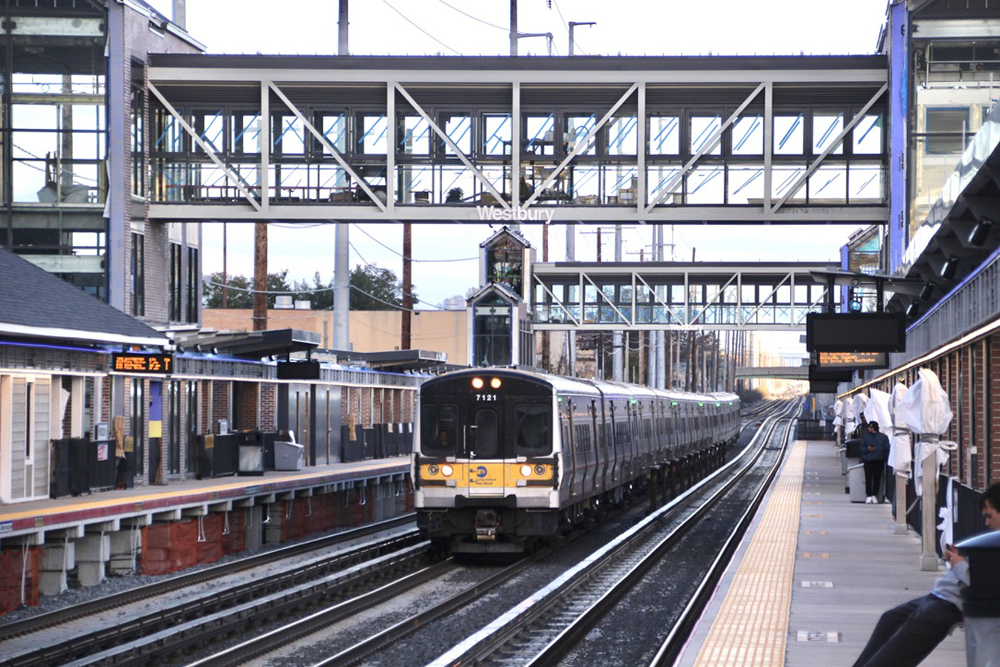
NEW YORK — The Metropolitan Transportation Authority, which until recently said its budget was balanced through 2026, faces a budget shortfall of $211 million this year, the New York State Comptroller said in a report issued Wednesday. That would rise to $652 million by 2028, the report says, and there are variables that could make the deficits much larger.
The report from Comptroller Thomas P. DiNapoli cites slower-than-projected ridership return following the pandemic and the decision to suspend the start of congestion-pricing tolls in Manhattan — which were to generate $15 billion for the MTA — as factors in the projected fiscal shortfall.
“A year ago, the MTA was looking forward to a period of solid fiscal health, but its financial condition has quickly turned from stable back to uncertain,” DiNapoli said in a statement accompanying release of the report. “… With farebox and tax revenues down, a pause on congestion pricing and other financial risks, significant operating budget gaps could again be on the horizon. This is a very real and troubling possibility.”
Increasing overtime, reflecting a need to fill vacancies and fewer available workers, is also a factor, the report says.
The MTA currently faces some $48 billion in unidentified funding for its capital program, the report notes — the $15 billion lost from the congestion-pricing program and $33 billion in planned, but not funded, projects in the 2025-2029 capital plan [see “New York MTA sets first Open House meeting …, ” Trains News Wire, Oct. 15, 2024]. The MTA’s success in securing funding in the next state legislative session will have much to say about the degree of deficit the agency faces; the capital shortfall from congestion pricing could lead to operating-budget costs of $260 million annually in higher maintenance costs, because of improvements that are delayed, and $300 million annually in higher debt servicing costs. Gov. Kathy Hochul has said she will find a source for funds to replace the congestion-pricing tolls but so far has not offered a specific plan.
Worst-case scenarios in the report include budget gaps that reach $3 billion by 2028. “While these gaps utilize an extremely conservative few of othe risks facing the Authority,” the report says in its executive summary, “these figures underline the potential impact of implementation risks from MTA and State decisions on the MTA’s finances, in addition to normal macroeconomic risks it faces.”
MTA spokesman John McCarthy told the Gothamist website that the risks identified in the Comptroller’s report “are consistent with what we are actively managing and have discussed publicly at our board meetings. We have achieved considerable operating savings and we’re committed to doing even more.”














As a long time rider of the MTA, which abused, does much well, Hochul’s torpedoing of the congestion pricing plan should terminate her tenure. It’s always revealing when riding any line to notice rehabbed trackwork.
Seems that congestion pricing if enacted would have fallen well short of transit’s capital needs. That’s even assuming the projected billions revenue would have accrued.
Kathy torpedoed congestion pricing b/c she didn’t want the rug pulled out from under her by the courts.
It’s been pointed out on this forum that auto/truck gas tax and registration fees no longer cover the costs of highways. So how do we expected auto/truck motorists to cover the skyrocketing costs of transit?
Ready for my daily post on state and local finance:
(1) States, localities, and local transit districts remain in business only because they are backstopped by the federal government, not in accordance with the Tenth Amendment to the United States Constitution.
(2) The federals don’t actually have any money. The federal government’s “money” consists of electrons on a compuer in Washington.
(3) States, locals and transit districts are required to balance their budgets. In this equation, federal grants count as “revenue”, which is not revenue at all but borrowed money. This is the biggest accounting fraud in the history of accounting.
(4) Public sector labor costs (notably, pensions, health insurance coverage, and early retirement) tend to be higher than in the private sector. Federal prevailing wage requirements for construction contracting don’t help.
(5) Public transit infrastructure costs are soaring due to a number of factors, notably including providing disabed access to systems built before transit agencies gave that any consideration.
(6) I don’t have a solution, nor does anyone else reading these pages.